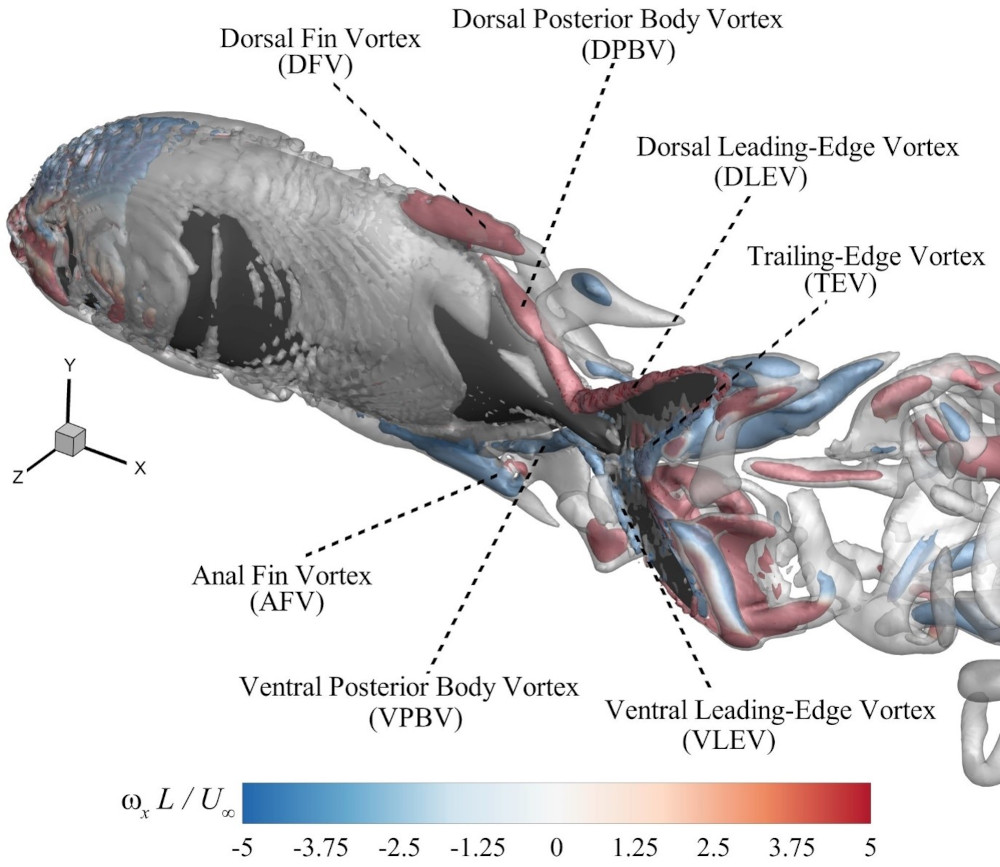Professors from Lakehead and Villanova universities are studying fish to create underwater robots
December 18, 2023 – Thunder Bay, Ont.
A Lakehead University professor and a professor from Villanova University are studying how fish use navigation and propulsion to help them create underwater robots, thanks to funding from NSERC.
Dr. Muhammad Khalid, Assistant Professor in Mechanical Engineering, received a $25,000 Alliance International Catalyst Grant from the National Sciences and Engineering Research Council of Canada for his project to build an international research partnership with Dr. Chengyu Li from Villanova University, and jointly investigate fluid-structure-chemical interactions in marine environments.
Over one year, they will study the “mysterious but very effective techniques adopted by fish in natural aquatic conditions,” Dr. Khalid said.
“These fish will provide us with lessons to design and develop efficient, agile, stealth, and highly maneuverable underwater robots.”
“We will study how fish sense the presence of predators, prey, food, and mating partners through fluctuations in velocity and pressure in the surrounding water. We want to learn how odour signatures and chemical cues help fish navigate in complex underwater environments,” he said.
The researchers will study how different fish, for example carangiform (Jack Fish, Tuna, Salmon), and anguilliform (eels), effectively control fluid dynamics through their kinematics to send and receive chemical cues.
They will investigate how natural aquatic swimmers use chemical odours for their navigation and propulsion.
Fish use these elements as important natural sensing and detection methods, but they are still relatively misunderstood by the scientific community.
Using the basics of natural swimming to design fish-like underwater robotic platforms form the main goals of this project. The researchers will develop mathematical models and perform computational simulations to investigate and understand odour-guided propulsion of fish-like bodies.
“The findings of this project will reveal important leads for developing bio-inspired techniques and equipment for sensing, detection, navigation, and propulsion of highly interdisciplinary underwater robots,” Dr. Khalid said.
The success of this project is expected to bring the Canadian scientific community and marine engineering industry at the forefront of environment-friendly underwater engineering technologies for a variety of purposes.
These include securing the borders, subsea explorations for natural resources, rescue and search operations, and several other opportunities.
In 2022/23, Lakehead University received more than $2 million in assistance from the Research Support Fund to support the indirect costs of research, which includes costs for supporting the management of intellectual property, research and administration, ethics and regulatory compliance, research resources, research facilities, and research security.
-30-
Media: For more information or interviews, please contact Brandon Walker, Media, Communications and Marketing Associate, at (807) 343-8110 ext. 8372 or mediarelations@lakeheadu.ca.
Lakehead University is a fully comprehensive university with approximately 9,700 full-time equivalent students and over 2,000 faculty and staff at two campuses in Orillia and Thunder Bay, Ontario. Lakehead has nine faculties, including Business Administration, Education, Engineering, Graduate Studies, Health & Behavioural Sciences, Law, Natural Resources Management, Science & Environmental Studies, and Social Sciences & Humanities. Lakehead University’s achievements have been recognized nationally and internationally, including being ranked in the top half of Times Higher Education's 2023 World Universities Rankings for the fourth consecutive year, and the number one university in the world with fewer than 9,000 students in THE’s 2023 Impact Rankings (which assesses institutions against the United Nations’ 17 Sustainable Development Goals). Visit www.lakeheadu.ca.
This photo explains the flow structures around Jack Fish.


